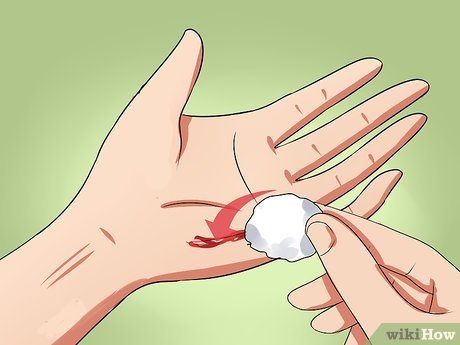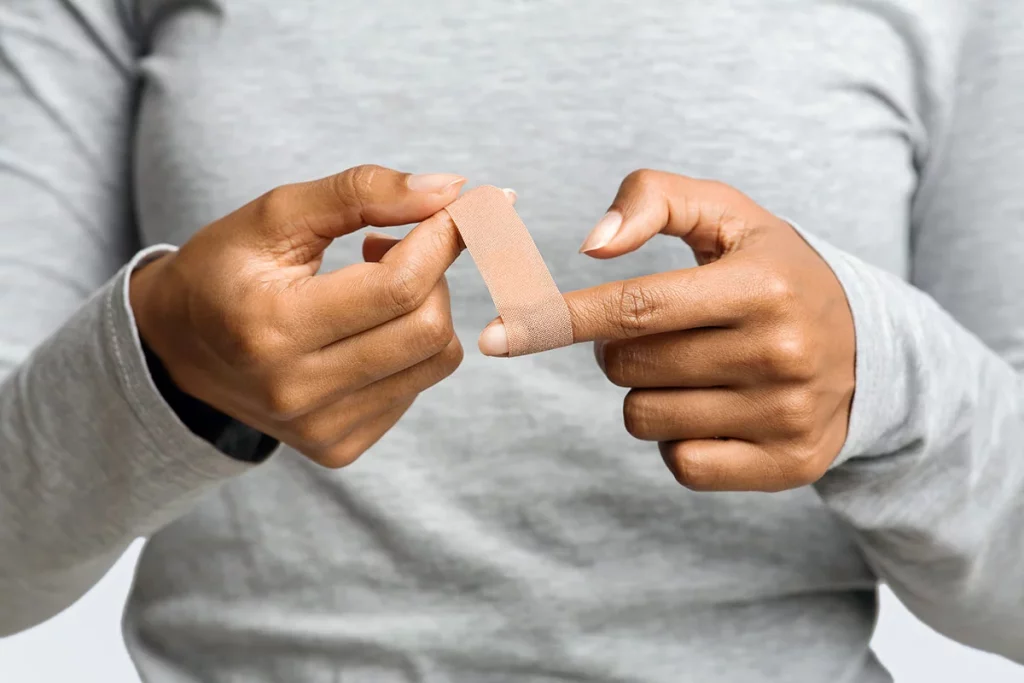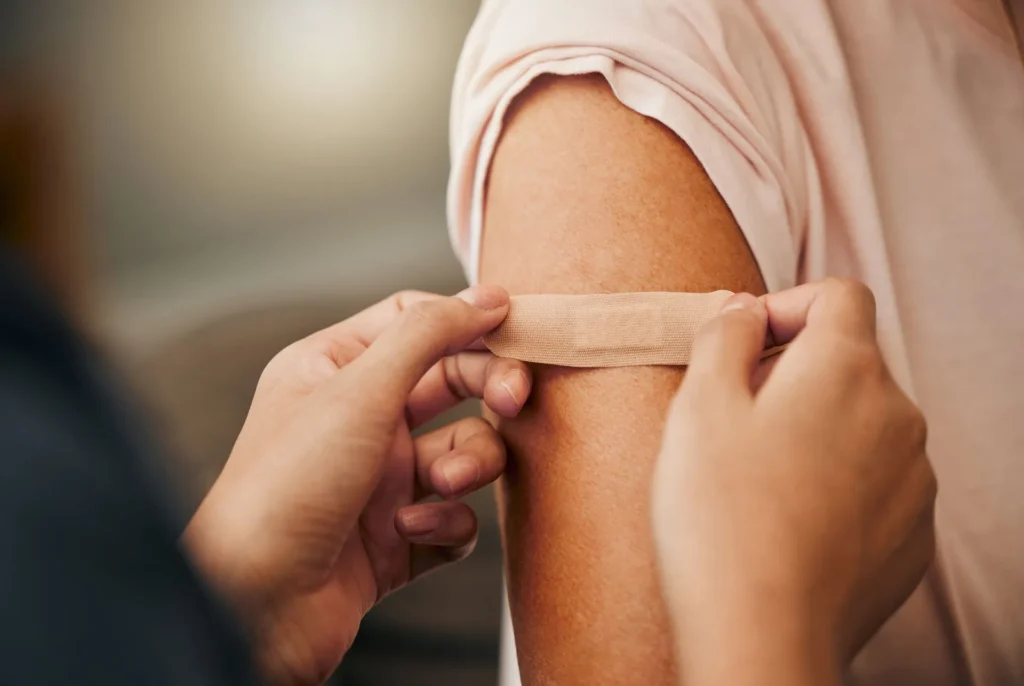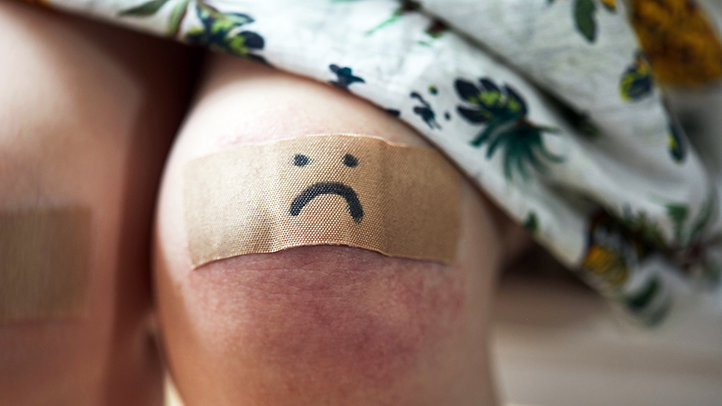
Dermatologists say we’ve all been there—tripping over our own feet or getting a little too adventurous in the kitchen, leading to cuts and scrapes that seem to pop up out of nowhere. Our first instinct might be to let those wounds breathe, thinking that airing them out will speed up healing. But what if we told you that this common belief is more myth than reality?
Dermatologists are here to set the record straight on wound care. Knowing how to properly treat your injuries can make all the difference between a quick recovery and an infection. In this guide, we’ll delve into why keeping wounds covered is essential and walk you through the correct steps for effective healing. Say goodbye to outdated practices and hello to expert advice—you’ll want every cut healed right!
Myth vs. Reality: Debunking the Airing Your Cuts & Scrapes

When it comes to treating cuts and scrapes, many believe that letting a wound “breathe” is the best approach. This notion has been passed down through generations, often leading people to avoid covering their injuries.
The reality? Exposing wounds can slow down healing and increase the risk of infection. Keeping a cut uncovered may invite dirt and bacteria, which are eager to enter the body.
Dermatologists emphasize that moisture is actually beneficial for healing skin. Properly covered wounds create an optimal environment where cells can regenerate effectively.
By debunking this myth, we encourage better practices in wound care—practices backed by science rather than old wives’ tales. Your skin deserves more than just fresh air; it needs protection to heal efficiently is the first advice dermatologists would give!
The importance of keeping wounds covered
Keeping wounds covered is essential for optimal healing. When a cut or scrape occurs, the body initiates a natural defense mechanism. Dermatologists say exposing that wound to air can interrupt this process.
A covered wound maintains moisture, which promotes cell regeneration. This environment encourages faster recovery and reduces discomfort.
Additionally, covering wounds protects them from dirt and bacteria. Open cuts are susceptible to infections that could complicate healing and lead to further health issues.
Bandages also serve as a physical barrier against additional injuries. A simple bump or scratch can aggravate an already sensitive area, slowing down the healing progression.
Moreover, keeping wounds under wraps helps control bleeding by applying pressure if needed. This proactive approach prevents unnecessary complications during the initial stages of care advice top dermatologists.
Remember that proper coverage not only aids in healing but also fosters confidence as you go about your daily life without worry, is top dermatologists advice.
Step-by-step guide for proper wound care:
Cleansing the wound is your first priority. Use lukewarm water and a gentle soap to wash away any dirt or debris. Avoid using alcohol, as it can irritate the skin.
Once clean, pat the area dry with a soft cloth. This helps prevent infection while preparing for ointment application.
Next, apply an antibiotic ointment. A thin layer is all you need to protect against bacteria without suffocating healing tissues.
Cover the wound with a breathable bandage. Choose one that fits comfortably and keeps moisture in while keeping contaminants out.
Change the bandage daily or whenever it becomes wet or dirty. Regular checks will help ensure everything stays clean and healing progresses smoothly.
By following these simple steps, you’re taking proactive measures towards effective wound care guided by dermatologist-approved practices that prioritize health.
A. Cleansing the wound
Cleansing the wound is a crucial first step in proper care. It helps remove dirt, debris, and bacteria that could lead to infection.
Start by washing your hands thoroughly with soap and water. Clean hands prevent contamination during the process.
Next, gently rinse the wound under lukewarm running water. This will help flush out any foreign particles without causing additional irritation.
If there’s visible dirt or grime, consider using a mild soap around the area—but avoid getting it directly into the cut itself. Harsh chemicals can delay healing and irritate sensitive skin.
After rinsing, pat the area dry with a clean towel or gauze. Ensure it’s not too rough; you want to avoid reopening any wounds you’ve just cleaned.
Remember: gentle care goes a long way in promoting healthy healing!
B. Applying an antibiotic ointment
After cleansing the wound, it’s time to apply an antibiotic ointment. This step is crucial for preventing infection and promoting optimal healing.
Choose a broad-spectrum antibiotic ointment like Neosporin or Bacitracin. These are designed to fight bacteria effectively while keeping the skin moist. A thin layer is all you need; using too much can impede healing.
Gently dab the ointment onto the wound with clean fingers or a cotton swab. Avoid rubbing it in vigorously, as this could irritate the area further.
Make sure to check for any allergic reactions after application. Redness or increased swelling may indicate sensitivity to one of the ingredients. If that happens, discontinue use immediately and consult your dermatologist for alternatives.
Remember, applying an antibiotic ointment should be part of your daily routine until your cut shows signs of healing.
C. Covering with a bandage
After cleansing the wound and applying antibiotic ointment, it’s time to cover it with a bandage. This is a crucial step in protecting your skin from outside irritants.
Choose an appropriate bandage size that fully covers the wound. A snug fit without being too tight helps ensure proper circulation while providing adequate protection.
Opt for breathable materials that allow moisture to escape but prevent dirt and bacteria from entering. Adhesive strips or gauze pads can work well depending on the location and severity of the injury.
Change the bandage daily or whenever it becomes wet or dirty. Keeping a fresh barrier will help maintain a clean healing environment, promoting faster recovery.
Remember, covering your cuts not only aids healing but also minimizes scarring—an added benefit you’ll appreciate down the line!
Factors that can affect wound healing

Several factors can significantly impact how a wound heals. Age plays a crucial role; younger individuals often heal faster due to more robust cellular activity.
Nutrition is another essential element. A balanced diet rich in vitamins, minerals, and proteins supports the healing process. Deficiencies can slow recovery time.
Underlying health conditions like diabetes or autoimmune disorders may hinder healing as well. These conditions can impair circulation and immune response, prolonging recovery.
Environmental factors should not be overlooked either. High moisture levels or exposure to irritants can complicate the healing process and increase infection risk.
Stress affects your body’s ability to heal efficiently. Chronic stress might delay wound closure and overall skin regeneration through various biological pathways that influence inflammation and immunity.
When to seek medical attention for wound care
Recognizing when to seek medical attention for a wound is crucial. If you notice signs of infection, such as increased redness, swelling, or pus discharge, don’t hesitate to consult a healthcare professional.
Wounds that won’t stop bleeding after applying pressure for 10 minutes should be examined by a doctor. This could indicate deeper damage requiring stitches or specialized care.
If the injury was caused by an animal bite or contaminated object, immediate medical advice is essential. Tetanus and rabies are serious concerns in these cases.
Additionally, if you have underlying health conditions like diabetes or weakened immunity, any significant cut may need professional evaluation.
Trust your instincts; if you’re worried about a wound’s appearance or healing process, it’s wise to reach out to your dermatologist for guidance. Your health deserves prompt attention whenever something feels off.
Common mistakes to avoid in wound healing

One of the most common mistakes people make in wound healing is skipping proper cleaning. Rushing this step can lead to infections, which complicate recovery. Always use clean water and a gentle soap to remove dirt.
Another frequent error is neglecting to change bandages regularly. Leaving a dirty or wet bandage on can create an ideal environment for bacteria. Aim to check your wound daily and replace the dressing as needed.
Some individuals also underestimate the importance of moisture balance. A wound that’s too dry may crust over, while one that’s too wet might become macerated. Using appropriate ointments keeps wounds moist without trapping excess fluid.
Don’t ignore signs of infection such as increased redness or swelling. Early intervention is key in ensuring a smooth healing process and preventing complications during recovery.
Conclusion
Wound care is essential for promoting healing and avoiding complications. Many people mistakenly believe that letting cuts and scrapes air out will help them heal faster, but dermatologists emphasize the opposite. Keeping wounds covered protects them from dirt and bacteria while providing a moist environment that promotes optimal healing.
Following the proper steps of cleansing, applying antibiotic ointment, and covering with a bandage can make all the difference in how quickly your wound heals. It’s also vital to be aware of factors like age, nutrition, and underlying health conditions that may affect recovery time.
Remember to watch for signs that require medical attention. If you notice increasing redness, swelling, or discharge around a wound—or if it doesn’t seem to improve within a few days—consulting your dermatologist is wise.
Avoid common pitfalls like picking at scabs or using harsh substances on fresh wounds. These mistakes can lead to infection or prolonged healing times.
Taking care of your skin isn’t just about aesthetics; it’s an essential part of overall health. With proper knowledge and practices in place, you’ll be well-equipped to manage any minor injuries effectively while supporting your body’s natural ability to heal itself.
Read more about this here. Visit QAwire for more health advice.


